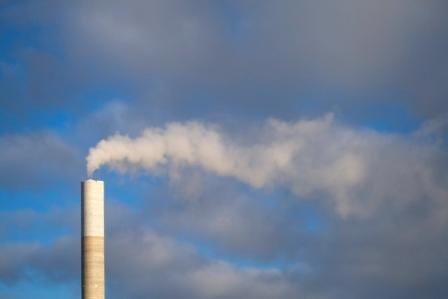 The Abbott Government’s safeguard mechanism released today begs the prickly question: is the Government simply safeguarding the right to pollute?
The Abbott Government’s safeguard mechanism released today begs the prickly question: is the Government simply safeguarding the right to pollute?
The safeguard mechanism has been billed as the means to constrain emissions growth from industry. It is meant to ensure that emissions reductions paid for through the Emissions Reduction Fund are not offset by significant increases in emissions elsewhere in the economy.
What is clear from the safeguard mechanism released today is that the Government is going out of its way to protect the largest polluters in Australia. In Greg Hunt’s own words, “It is our clear expectation that no businesses will pay penalties.’’
When the analysts at RepuTex assessed the draft safeguard mechanism they called it a “toothless tiger”. They found that “out of Australia’s top 20 emitting facilities, none are expected to incur any liability, despite almost all being forecast to grow their emissions over the next ten years. This means the largest generators such as Loy Yang A and B, Hazelwood, Bayswater, and Yallourn are expected to avoid exceeding their sectoral baseline under the scheme, while LNG export facilities Wheatstone, Gorgon, Itchys and Pluto are also expected to avoid facing any liability as a result of re-baselining.”
It seems unthinkable that the heavily flawed draft safeguard mechanism released for initial consultation would be nearly the same flawed safeguard mechanism released in draft form today. If anything, it has gotten even more generous for polluters.
The threshold for polluting facilities to be included in the scheme is proposed to be set too high at 100,000 tonnes of carbon emissions a year. This is significantly greater than the current reporting thresholds for polluting facilities under the NGER Act of 25,000 tonnes a year – a threshold that should simply be extended to the safeguard mechanism.
The scheme would also set the baseline of emissions for any given facility at the highest level reached by that facility over a five year reporting period. If the Government were serious about pushing for climate pollution reduction, baselines would surely be set at the lowest level reached over the past 5 years. In each facility’s case, it’s a level we know can be achieved because it already has. This would simply hold affected companies to their own best practice.
However, rather than capping Australia’s overall emissions, the mechanism allows companies to exceed their baseline if they reduce their emissions intensity. That allows for higher total emissions. In addition, companies are also allowed to re-set their baselines twice in the next 10 years.
Further, there are special allowances for heavily polluting sectors. The electricity sector will be given an industry wide baseline based on its highest emissions year in the past five years. If that is exceeded, they have until 2022 before the sector would revert to a facility-by-facility baseline.
Climate change demands action now, not policies that don’t have a meaningful impact for the next seven years.
Let’s consider what it would mean if this sort of approach were applied to drink driving laws. The limit would be set at a level so high that the Government could be certain that no-one would ever be charged. We would see mass carnage on the roads. Such toothless laws would send a strong message to the community that the Government will not only tolerate extreme and risky drinking behaviour, it will go out of its way to ensure that no-one will ever get caught for doing it.
To view such an approach as any kind of safeguard is absurd – this is more like a license to pollute.
It seems as though the government has missed the point of their own policy. The ERF and the safeguard mechanism are proposed as policies to cut pollution – not to protect business as usual among Australia’s biggest polluting companies. Australia remains committed to the international goal of reducing pollution in line with avoiding 2 degrees of global warming. Minister Greg Hunt has claimed that the “the Government will meet Australia’s 2030 target through policies built on the successful Direct Action plan, in particular the Emissions Reduction Fund and its Safeguard Mechanism.”
It is unclear how this so-called safeguard mechanism can possibly play a realistic role in meeting the Government’s pollution reduction targets that it will take to the Paris climate change talks later in the year, or those we are already committed to for 2020. What we need is an effective policy mechanism that not only efficiently reduces climate pollution but also makes long-term structural changes in our economy.
Once again, the government appears to be putting the short term vested interests of a handful of big polluting entities above the long term interest of avoiding dangerous climate change for the Australian community, our environment and our economy.
Suzanne Harter is a Climate Change Campaigner for the Australian Conservation Foundation







